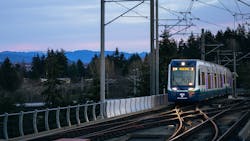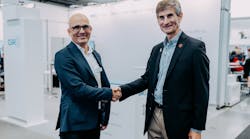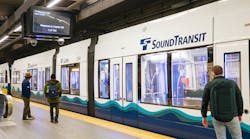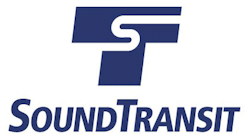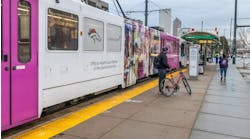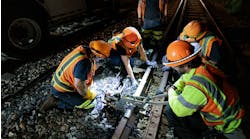Challenges abound in the design, construction, maintenance and operation of light-rail lines in urban areas. Chief among them is controlling track- and vehicle-born noise, an important part of maintaining the support of an agency’s various stakeholders, which include commuters and the many residents and businesses — the neighbors — adjacent to the tracks. Sound Transit, which runs through the heart of Seattle, has been particularly sensitive to the effects of train-borne noise since the system was on the drawing board.
Sound Transit, which serves Pierce, King and Snohomish counties, includes light rail, commuter rail and bus modes serving Seattle and the tri-county area. Light-rail service began on the 1.6-mile Tacoma Link T Line in 2003 and on the 15-mile Central 1 Line serving Seattle in 2009. In the early days, the 1 Line connected SeaTac airport to downtown Seattle. Between 2016 and 2021, the 1 Line opened three extensions as part of a 36-mile, $17.8-billion ST2 expansion plan approved in 2008. At present, the operating segment on the 1 Line connects Angle Lake, located south of SeaTac Airport, to Northgate, located north of the University of Washington (UW) campus. This current 26-mile Link light-rail system accounts for most of the agency’s annual ridership of 26 million. It also represents the bulk of the challenges.
There will be further challenges, no doubt, as the system grows with completion of the remaining construction underway as part of the ST2 expansion work. This will be followed by the 62-mile, $54-billion ST3 expansion plan approved in 2016 — the largest light-rail expansion project on the continent — which will add further expansion and more transit connectivity in the region. By 2040, when the ongoing ST2 construction and the future ST3 plans are completed, the existing 26-mile, 20-station light-rail system will have grown to a 116-mile network with multiple lines and approximately 70 stations.
On the old and the new lines, the need to be good neighbors and control wheel/rail-generated noise has been a front-and-center issue. Lessons learned on the existing lines are being carried forward to the new lines.
Ground-borne vibration generated by trains was known to be a potential issue at Sound Transit from the get-go, especially in the Northgate Link tunnels on the 1 Line in which trains run through twin bored tunnels directly beneath the extremely vibration-sensitive research facilities on the UW campus. To ensure it met the rigorous wayside noise and vibration requirements in this area, Sound Transit worked with vibration consultant Wilson Ihrig to develop a 5-Hz floating slab track through the tunnels. Information from a 400-foot prototype section built as part of the University Link extension in the tunnels under Capital Hill was used to dial in the optimal fastener type, durometer of the rail pads and the size and weight of the concrete slabs to meet the performance requirements. To ensure it meets the stringent vibration criteria, every train operating on the alignment is monitored by “early warning” wheel flat detectors before entering the tunnels. The tunnels under the UW house 40 vibration monitors located every 300 feet along the tunnel bench.
“We have warning and exceedance criteria for vibration generated by trains, but we’ve never breached any threshold,” said Shankar Rajaram, executive project director - vehicles of Sound Transit’s Buildings, Infrastructure and LRV Division.
In addition to vibration monitors in the tunnels, Sound Transit performs periodic acoustic measurements across the lines. A microphone in the rear cab of a revenue-service train records noise readings across the system.
“We’ve found the best place to control noise and vibration is at the source,” Rajaram said. “We’ve also found noise data can also be used to maintain a state of good repair.”
Sound Transit currently maintains 7.7 miles of track on elevated structure, eight miles of underground track and 10.3 miles of at-grade track. The at-grade track includes street-running embedded track on MLK Boulevard and the embedded tracks in the downtown Seattle transit tunnel that once shared right-of-way with transit buses. The underground track includes an approximately 3,700-foot section of floating slab track in each train tunnel under the university campus.
Of course, track design and maintenance represent only half of the equation, vehicle design and maintenance make up the other half. Sound Transit currently operates 62 of the Series-1 Kinkisharyo and 75 of the newer Series-2 Siemens light-rail vehicles (LRVs).
“We’re currently taking delivery of three Series-2 cars per month,” said George McGinn, Sound Transit executive operations director. “We expect to have all 152 Series-2 Siemens LRVs in service by mid-2025.”
All of the vehicles incorporate powered trucks with a pair of solid axles on the A and B cars of the consist and a truck with four independently rotating wheels (IRWs) on the middle, low-floor C section of the cars. The 26-inch wheels have Bochum 84 tires on the Series-1 cars and a thicker Bochum 2000 on the Series 2 cars.
A by-product of the low-floor LRV design, IRWs behave differently from the typical fixed-axle arrangement, particularly in that they do not provide any rolling radius difference, which means they do not steer in curves, they hunt and flange excessively in curves and in tangent track and, more significantly, in special trackwork, where they batter frog points.
As a result, IRWs require re-truing for flange wear every 40,000 to 50,000 miles — twice as frequently as the wheels on fixed axles, which are primarily cut for hollow tread wear or flats spots, said Paul Denison, Sound Transit deputy executive director, Transportation and Maintenance Operations Department. In addition to high flange-wear rates, IRWs contributed to rail and track component wear and wheel/rail-generated noise on the system, an issue Sound Transit is very sensitive to.
To further mitigate wayside noise, Sound Transit initiated a rail grinding program in 2009, but because of the relatively light vehicle weight and overall low tonnage on the system, grinding marks were not worn away under traffic. Although the rail was ground to the recommended profiles, the surface finish of the ground rail was so rough and the grind marks so deep that Instead of reducing noise, the noise level increased by up 10dB after grinding.
“We were actually amplifying the noise,” said Jason Bailey, Sound Transit track engineering manager - design engineering and construction management.
Ten years lapsed between the first and subsequent grinding programs. During that time, noise became a more significant issue as new line extensions were introduced. By the time the South 200 and University Link extensions entered into service in 2016, the increasing noise levels made it clear something had to be done to mitigate train-generated noise on the system. Added to that, deteriorating rail profile conditions, increasing wheel tread and flange wear rates and rail defects had begun to emerge. In the 10 years since the previous grinding cycle, rolling contact fatigue (RCF), which leads to surface defects in the absence of sufficient natural, train-induced wear or frequent enough artificial wear provided by grinding, developed on the contact surfaces of the 310- to 380-Bhn rail on the system.
“If we had been grinding every three years from day one, as we are now, these types of defects might not have formed,” Bailey said.
In 2016, rail grinding was performed on the new rails in the University Link tunnels to match the rail shape to the wheel profile, which is common industry practice. After this grinding program, Sound Transit encountered a bewildering wheel/rail-related issue: E-clips that keep the rails fastened to the track started breaking within a 3,000-foot segment of the University Link section.
Sound Transit’s database of noise readings showed unusually high noise levels (in the high 800-Hz frequency range) in the clip-failure areas. Further investigation found the 820-HZ track noise corresponded to the natural frequency of the e-clips used in the segment. To determine the root cause of the high-frequency resonance in this segment, Sound Transit looked at track geometry, construction tolerances, fastener design and wheel and truck performance of the vehicles operating on the line. It also investigated research indicating the deep grinding marks left in the rail were associated with the speed of the grinding motors. The marks appeared at approximately one-inch intervals wherever a clip had failed.
A deeper dive into the noise data map showed noise spikes lined up with locations of the broken clips. The data provided fingerprints of frequencies at hot spots where the natural frequency of the track system matched the frequency of the wheel/rail-generated noise pattern from the rail grinding marks, Rajaram said.
Sound Transit brought in Advanced Rail Management (ARM), which is now part of the Global Rail Group, to assess rail surface conditions in the clip-breakage area and to develop, along with Loram Maintenance of Way, the grinding contractor, a method of “polishing” the rail with softer-grit grinding stones to leave a smoother surface finish. ARM and the National Research Council of Canada (NRC) were charged with assessing wheel conditions and coming up with a profile design and truing method to reduce wheel surface roughness. Their study concluded that while powered wheels tended to hollow wear, the IRWs, which wore more heavily in the flange, tended to wear more asymmetrically — information that has since guided Sound Transit’s wheel truing strategy and led to better uniformity and a smoother, quieter wheel running surface, Rajaram said.
In all, it took the better part of a year to identify the factors that contributed to the problem and to validate the root cause, Rajaram said.
“But once we changed the grinding program, the problem went away,” he added.
The experience led Sound Transit to develop a specification to procure the wheel/rail expertise that could identify and assess the potential relationships between noise, wheel and rail wear, defect growth and the ability to address them. In addition to the more typical requirements for rail grinding to remove surface defects re-shape the rail profile, the Sound Transit spec incorporated a polishing step to ensure the wavelength signature of the finished rail will mitigate the types of noise and vibration-related problems previously encountered on the system. Its surface finish requirement is significantly more stringent than the North American grinding standard and beyond what any grinder on the continent had achieved.
“We found that what works on other properties doesn’t seem to work here,” Bailey said. “The polishing step is really important to us.”
Sound Transit subsequently awarded ARM/GRG a long-term contract to provide wheel/rail-related engineering support, oversee its rail grinding program and provide quality assurance that the requirements for re-profiling, removing defects from the surface of the rail and that the all-important “polishing,” or surface-finish requirements were met.
To get it done, ARM conducted an overall assessment of the system, including track geometry and rail corrugation measurement using a Corrugation Analysis Trolley, ultrasonic and pre- and post-grinding Draisine eddy current testing to measure rail surface crack length, depth, geometry and proximity to other cracks.
“The first order of business was to assess overall wheel/rail conditions on the system,” McGinn said.
Following that, a revised set of rail profiles designed by the NRC was adopted; a grinding plan was developed and implemented.
ARM used data from the measurements to prioritize locations, estimate metal removal and the number of passes that would be required and determine the total number of miles to be addressed to establish an effective gradual-preventive grinding program. Corrugation measurement data is used to guide rail polishing efforts to meet Sound Transit’s five-micrometer surface roughness target within the wheel/rail running band.
Through the partners it assembled, ARM provided access to a variety of rail bound and hi-rail grinding equipment that were fitted with coarse to extra-fine-grit grinding stones, depending on the metal-removal and surface-finish requirements. Milling equipment is also available if needed to address surface damage requiring extensive metal removal.
As is the case with most transit systems, obtaining adequate track time to perform maintenance is a challenge. The typical maintenance window between the last and first trains of the day is three to 3.5 hours at Sound Transit.
“Once you add in logistics and delays, we get 60 to 90 minutes of grinding time on average,” Bailey said.
With experience, Sound Transit has found ways to allocate more time for grinding. During the 25 days of grinding it will do this year, Sound Transit will begin single tracking train operation to create six-hour work windows, which will allow four hours of grinding — roughly 2.5 to four times the amount of grinding time than in the past, Bailey said.
While rail grinding has been effective in controlling defects on most of the system, the rail in the direct fixation track on the elevated Tukwila segment presents an ongoing challenge.
“Once a defect forms, it just propagates,” Bailey said.
Dye penetrant tests of rail samples have shown studs and spalls are two- to six-mm deep. ARM and Sound Transit experimented with milling equipment earlier this year to address the defects.
“Grinding typically can’t remove enough metal to remove them. We’ll have to wait a bit to see if milling was able to get deep enough to remove or at least control the defects,” Bailey said.
Rail grinding, historically, has not been effective in embedded track. The six-inch stones found on the typical transit grinders are not able to effectively address the head of the rail in embedded track. Consequently, ARM will utilize a smaller, hi-rail grinder with four-inch stones for this part of the job. ARM is also working with Sound Transit to determine the cause of a few rail breaks that occurred during a cold snap in the Tukwila segment during the past winter.
“The current grinding program has been going well,” Bailey said. “Noise levels, overall, are reduced.”
“Sound Transit’s success in looking beyond the symptoms into studies and consultations with people around the world is a case in point that no individual or agency has all the answers,” Rajaram said. “It’s all about having knowledgeable people on your team and identifying the people who can answer your questions. As an agency you need to develop strong industry relationships so when issues come up, you know the right people to contact. You can’t put a value on that.”
-------------
Bob Tuzik is publisher of Interface, the Journal of Wheel/Rail Interaction and executive co-program director of Wheel/Rail Seminars.
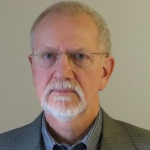
Robert Tuzik
Bob Tuzik is publisher of Interface, the Journal of Wheel/Rail Interaction and executive co-program director of Wheel/Rail Seminars.
